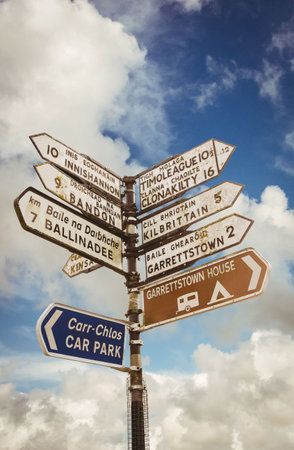Introduction to UK Number Plates
Number plates are a crucial part of vehicle identification in the United Kingdom, serving both legal and practical purposes. Since their introduction in 1903 under the Motor Car Act, number plates have evolved alongside the nation’s roads and vehicles. Originally designed to provide a straightforward way for authorities to identify vehicles and enforce road regulations, today’s number plates continue to play an essential role in law enforcement, taxation, and public safety. In everyday conversation, you’ll hear number plates referred to as “reg plates,” “number plates,” or simply “plates.” These terms are widely used across England, Scotland, Wales, and Northern Ireland. The significance of number plates extends beyond simple identification; they also reflect important information about a vehicle’s age and origin, thanks to a unique combination of letters and numbers. Understanding the history, purpose, and common terminology surrounding UK number plates sets the foundation for appreciating their design rules and application process.
2. Design and Layout of UK Number Plates
Understanding the design and layout of UK number plates is crucial for both compliance and proper vehicle identification. UK number plates are not only regulated for visibility and legibility but also follow strict guidelines regarding their appearance, format, and colour schemes. Let’s break down the key features that define British number plates.
Standard Appearance and Format
The standard UK number plate consists of a rectangular plate displaying a specific alphanumeric sequence. The current format, introduced in 2001, follows this structure:
| Section | Description |
|---|---|
| Area Code (First 2 Letters) | Indicates where the vehicle was first registered |
| Age Identifier (Next 2 Numbers) | Shows the year and half-year period when the vehicle was registered |
| Random Letters (Final 3 Letters) | Randomly assigned to make each plate unique |
An example would be: AB12 CDE
Colour Schemes and Front/Rear Distinctions
The use of different colours on UK number plates helps distinguish the front from the rear of vehicles, enhancing road safety and enforcement.
| Plate Position | Background Colour | Text Colour |
|---|---|---|
| Front Plate | White Reflective | Black Characters |
| Rear Plate | Yellow Reflective | Black Characters |
This distinction ensures that vehicles are easily identifiable from both directions in all lighting conditions, as required by law.
Other Key Features and Requirements
- Font: Only the mandatory ‘Charles Wright’ font is permitted for uniformity.
- Borders & Symbols: Simple borders are allowed, but no background patterns or images except approved national identifiers (like the Union Flag or regional emblems).
- Size: Standard plate size is 520mm x 111mm for most vehicles, with exceptions for motorcycles or imported vehicles.
- Material: Plates must be made from reflective materials to meet visibility standards.
- BSAU Marking: All legal plates will display a manufacturer’s mark and the BSAU145e standard code in small print.
Troubleshooting Tip: DIY Plate Check-Up
If you’re unsure whether your current number plate meets UK standards, inspect it for correct colours, font, clarity, and legal markings. If any aspect doesn’t conform, consider replacing it to avoid penalties during MOT checks or roadside inspections.

3. Legal Rules and Regulations
If you’re planning to fit or replace a number plate in the UK, it’s essential to understand the legal requirements as set out by the Driver and Vehicle Licensing Agency (DVLA). These rules are designed not only for road safety but also to ensure your vehicle remains compliant and avoids unnecessary fines.
DVLA-Approved Font Style
All number plates must use the mandatory ‘Charles Wright’ typeface. This specific font is chosen for its clarity and uniformity, making it easy for law enforcement and Automatic Number Plate Recognition (ANPR) cameras to read your registration. Decorative fonts or italicised lettering are strictly prohibited.
Size and Spacing Requirements
The legal standard for number plate characters on vehicles registered after September 2001 is as follows: each character must be 79mm tall and 50mm wide, with a stroke width of 14mm. The vertical space between groups of numbers and letters should be 11mm, while the horizontal spacing between each character must be 11mm as well. These measurements ensure that all plates are legible at a distance and under various lighting conditions.
Material and Reflectivity
UK number plates must be made from a reflective material that complies with British Standard BS AU 145e. This ensures visibility both day and night. Plates should have a plain background—white for the front, yellow for the rear—with black characters. No patterns, logos (other than national identifiers), or tinted covers are allowed, as these can reduce readability.
Additional Markings
Every legal number plate must display the name and postcode of the supplying outlet, as well as the BS AU 145e certification mark in small print along the bottom edge. This requirement helps trace plates back to their source, discouraging fraudulent activity.
Penalties for Non-Compliance
If your number plate doesn’t meet these standards, you could face an on-the-spot fine, MOT failure, or even have your registration withdrawn. That’s why it’s important to double-check all specifications before purchasing or fitting new plates.
4. Special and Personalised Plates
In the UK, number plates are more than just a legal requirement—they can be a unique statement. Special, personalised, and private plates, often called “cherished plates,” allow vehicle owners to display something distinctive on their vehicles. However, there are specific rules, etiquette, and limitations that must be followed.
Types of Personalised Number Plates
| Type | Description |
|---|---|
| Cherished Plates | Historic or dateless plates, often from early registrations. Highly sought after due to their rarity and simplicity. |
| Personalised Plates | Plates chosen to reflect names, initials, or words. Formats may mimic names or convey messages within DVLA guidelines. |
| Private Plates | A broader term for any registration not issued in strict sequence, often including both cherished and personalised numbers. |
Rules and Regulations
- Format Compliance: All plates must use approved fonts, spacing, and colours regardless of how creative the combination is.
- No Misrepresentation: Altering the plate to change its appearance (e.g., using screws or font changes to create letters or numbers) is illegal and can result in fines or confiscation.
- Date Restrictions: You cannot make a vehicle appear newer than it is; for example, you cant put a 22 plate on a car registered in 2018.
- Offensive Content: The DVLA screens all applications; anything offensive or inappropriate will be rejected.
Basic Etiquette for Personalised Plates
- Avoid combinations that could cause offence to others on the road.
- If selling your vehicle but keeping your cherished plate, remember to apply for retention through the DVLA before sale.
- When buying a personalised plate, ensure it’s transferred correctly via official DVLA channels—never simply swap physical plates without paperwork.
The Application Process at a Glance
| Step | Description |
|---|---|
| Select Plate | Browse available plates via DVLA auctions or approved dealers. |
| Purchase & Documentation | Buy the plate and receive a certificate of entitlement (V750) from the DVLA. |
| Assign Plate | Apply online or by post to assign the plate to your vehicle using V5C log book details. |
| Fit Plate Legally | Have new plates made by a registered supplier using correct materials and formats. |
| Inform Insurer & Update Records | Notify your insurer and update relevant records once the transfer is complete. |
5. Applying for and Replacing a Number Plate
Step-by-Step Guide to Getting New or Replacement Number Plates in the UK
If your vehicle’s number plate is damaged, lost, stolen, or you’re looking to update it after personalisation, applying for a new or replacement number plate in the UK is a straightforward process. Here’s a practical, step-by-step guide to help you navigate this task with confidence.
Step 1: Gather Required Documents
You’ll need to provide original documents that prove both your identity and your right to use the registration number. Typically, you’ll need:
- Proof of identity (e.g., photocard driving licence, passport, or utility bill)
- Proof of entitlement (e.g., V5C logbook, V750 certificate for personalised plates, or V778 retention document)
Step 2: Find an Authorised Supplier
Only suppliers registered with the DVLA (Driver and Vehicle Licensing Agency) are legally allowed to make number plates. To find one near you, check the official DVLA supplier list. Most large motoring retailers, auto parts shops, and some garages offer this service.
Step 3: Visit the Supplier and Order Your Plates
Bring your documents to the chosen supplier. They will verify your identity and entitlement before making your new or replacement plates. Remember that plates must conform to UK regulations regarding font, spacing, colour, and any identifiers such as flags or national emblems.
Step 4: Fitting Your Number Plates
You can fit the plates yourself using screws or strong adhesive pads (readily available from most car accessory shops), or ask the supplier to fit them for you—many offer this as an added service. Ensure they are securely attached and clearly visible at all times.
DIY Tip:
When fitting number plates yourself, always double-check alignment and avoid overtightening screws which could crack the plate. If using sticky pads, thoroughly clean the mounting surface first for best adhesion.
Step 5: Inform Authorities if Needed
If your plate was stolen or lost, report it to the police and obtain a crime reference number before replacing it. This helps prevent potential misuse of your old registration number.
Summary
Applying for new or replacement number plates in the UK involves gathering correct documents, visiting an authorised supplier, ensuring compliance with legal requirements, and fitting the plates securely. Staying organised and following these steps ensures you’ll be back on the road safely—and legally—in no time.
6. DIY Maintenance and Upkeep
Keeping your number plates in top-notch condition isn’t just about appearances – it’s a legal requirement across the UK. With a bit of hands-on care, you can easily ensure your plates remain clean, securely fastened, and compliant with current regulations. Here are some practical tips for maintaining your number plates at home:
Regular Cleaning
Dirt, road salt, and grime can build up quickly, especially during the British winter. Use a soft sponge or microfibre cloth with mild soapy water to gently clean both front and rear plates. Avoid abrasive cleaners that could scratch the reflective surface or damage the black lettering, which could make your plate hard to read and potentially land you a fine.
Secure Attachment
Vibrations from driving, speed bumps, and even minor knocks can loosen number plates over time. Check periodically that all screws or adhesive pads holding your plate are tight and intact. If you notice any wobbling or rattling, tighten the fixings or replace worn pads promptly. For those using screw covers, ensure they’re still snug to prevent water ingress and corrosion around the fixings.
Legal Compliance Checks
The UK has strict rules on number plate visibility and design. Make sure there are no cracks, chips, or fading that might make your registration unreadable. Double-check that your plates meet the British Standard (BS AU 145e), have the correct font and spacing, and include the supplier’s details at the bottom. Don’t forget: tampering with fonts, adding backgrounds, or using incorrect colours is illegal and can result in penalties.
Seasonal Inspections
It’s good practice to give your number plates a thorough inspection every few months – especially before an MOT test or long journeys. Look out for signs of delamination (where the reflective layer peels away), loose fittings, or signs of attempted theft. Promptly address any issues to avoid being pulled over by police or failing a vehicle check.
Handy Tip: Carry Spares
If you’re often off-roading or driving in rural areas where plates might get damaged, consider keeping a spare set of screws and adhesive pads in your glovebox. That way, you’ll be ready for a quick roadside fix should anything go awry.
By following these DIY maintenance steps, you’ll keep your number plates looking smart and fully compliant with UK laws – saving yourself hassle, fines, and unnecessary trips to the garage.


